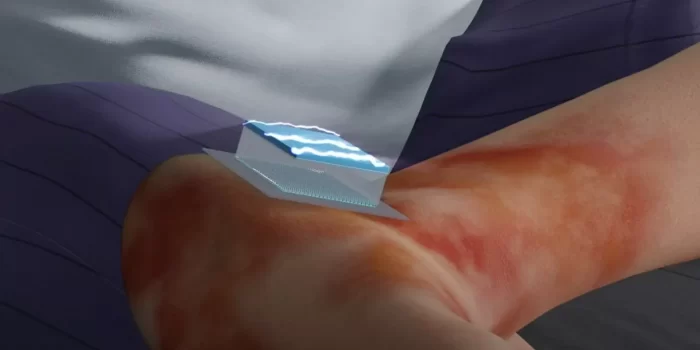Chandan Sen is leading a research team at the Indiana University School of Medicine and they have developed a unique nanochip device that can reprogram skin cells in the body to become new blood vessels and nerve cells, out of the prototype phase.
Before this, a breakthrough was made in taking the specialized adult cells and reverting them into the kind of non-specialized stem cells found in embryonic tissue. These stem cells have great therapeutic potential. They can then be made to grow into different cells, tissues, and organs that will be entirely matched with the patient.
However, it is not without its downside. It can lead to a rise in cancerous cells.
The IU team is aiming to transform the human body into its own cell programmer using a technology called tissue nano-transfection. In this technique, a silicon nanochip is printed to include channels ending in an array of micro-needles. On top of the chip is a rectangular cargo container, which holds specific genes.

Propelled by a focused electric charge, these genes are introduced to the desired depth in the living tissue and alter the cells, converting the location into a little bioreactor that reprograms the cells to become different kinds of cells or multicellular structures, such as blood vessels or nerves. Once the production starts, they can be used to repair organs and tissues.
“This small silicon chip enables nanotechnology that can change the function of living body parts,” says Sen, director of the Indiana Center for Regenerative Medicine and Engineering. “For example, if someone’s blood vessels were damaged because of a traffic accident and they need a blood supply, we can’t rely on the pre-existing blood vessel anymore because that is crushed, but we can convert the skin tissue into blood vessels and rescue the limb at risk.”
The work on this research has been going on for five years. the team now wants to move forward with the prototype and turn it into a practical application. They are aiming to get the US FDA approval next year, which would open the potential for clinical research in people. its applications will mainly include repairing brain damage resulting from a stroke or reversing nerve damage caused by diabetes.
“This is about the engineering and manufacturing of the chip,” says Sen. “The chip’s nanofabrication process typically takes five to six days and, with the help of this report, can be achieved by anyone skilled in the art.”
The research was published in Nature Protocols.


